
The last couple of years brought us a desire to escape from the real world, maybe more than ever before.
Due to the circumstance that led us to seek a hiding place, many of the refuges from reality we’ve traditionally sought weren’t available. We didn’t have movies at movie theaters. We didn’t have concerts. We lost sporting events. The attempts to provide substitutes — direct-to-streaming movies, Zoom and YouTube Live concerts, games played in empty stadiums with cut-out fans and canned cheers — were poor replacements for the real thing.
To a certain part of the population the inconvenience was not especially great, because they were never interested in those things anyway. They are the gamers, to whom reality was already an annoyance occasionally interrupting their online fantasy lives. They are other NEETs — Not in Education, Employment, or Training — to whom the pandemic manifested itself chiefly as an inconvenience in maintaining the snack supply here in the basement room at Mom’s house.
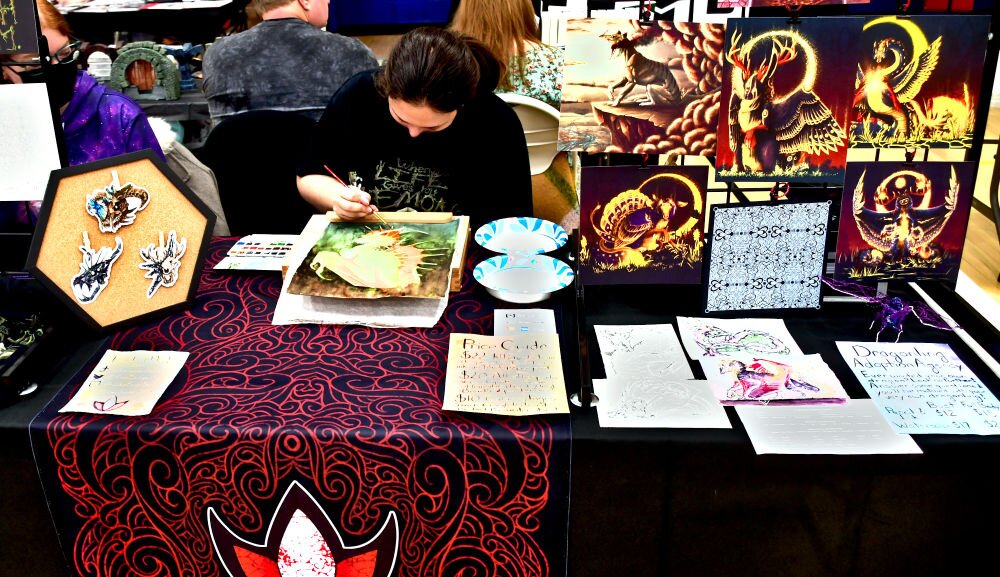
A freelance, I dove into the study and enjoyment of anime, the remarkable Japanese animated art form, about which more in a bit.
The NEETS did lose a means of dipping their uncalloused soft pink toes into reality, though. The cons all got canceled.
You might rightly wonder what a con is. It’s short for a convention, and in the fantasy NEET world it’s one of the few times a person is compelled to venture into the sunlight.
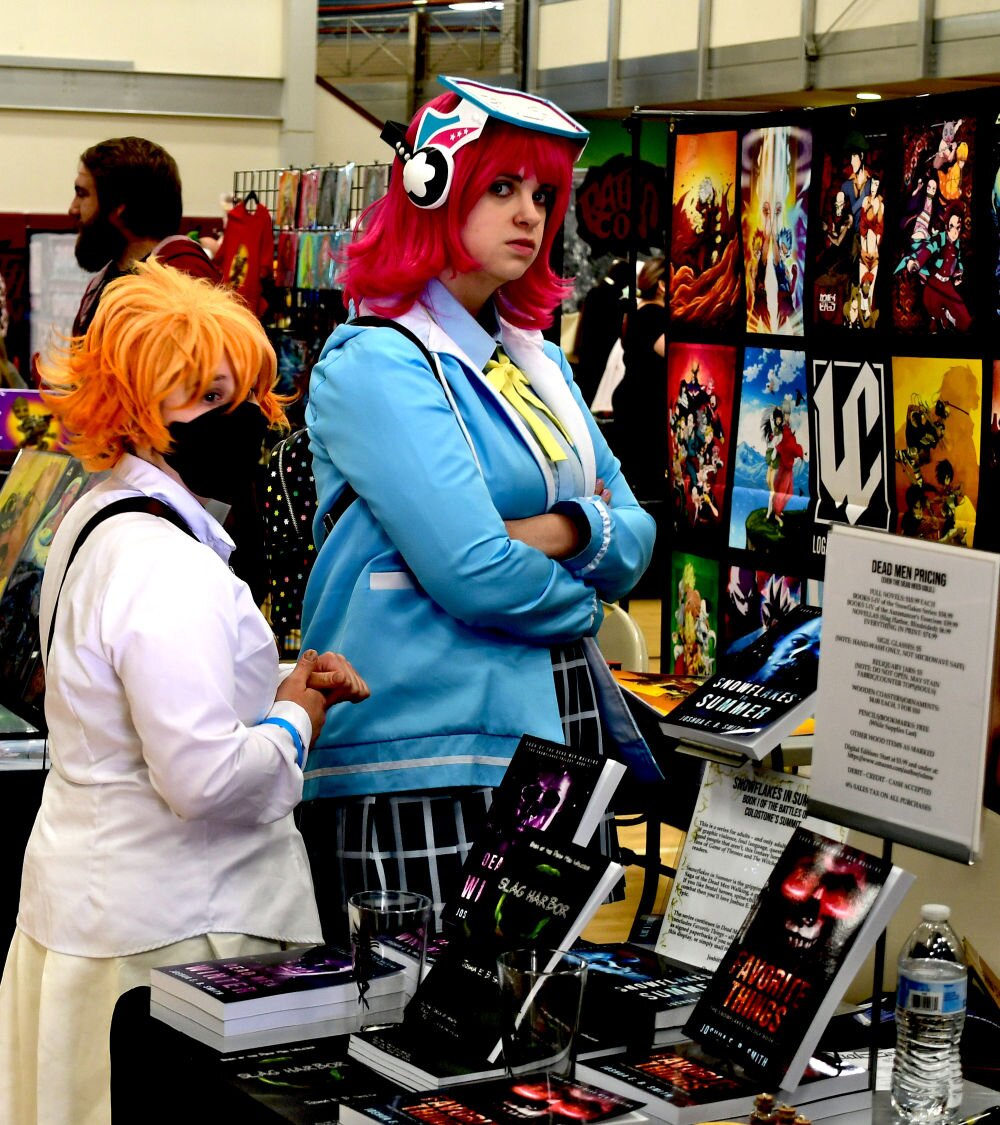
Some cons are enormous. There are, or were, a lot of them. While gamers, anime fans, and cosplayers — grownups or semi-grownups who disguise themselves as fantasy characters — have their own cons, there is so much overlap that usually there’s not a lot of difference among the conventions honoring the various NEET pursuits.
As late as last November, cons were reportedly places where COVID-19 got spread. That’s not a surprise, really. Cons involve a lot of people gathered in close proximity. Those who attend anime conventions are, rightly or wrongly, famous for their inattention to personal hygiene. At the truly big cons, young people come to town from far and wide. They don’t have a lot of money and what they have they want to spend on games, manga, and figurines, so they’ll sleep, maybe a dozen to a room, in local hotels and hostelries. We can’t be too surprised that they sometimes become human petri dishes.
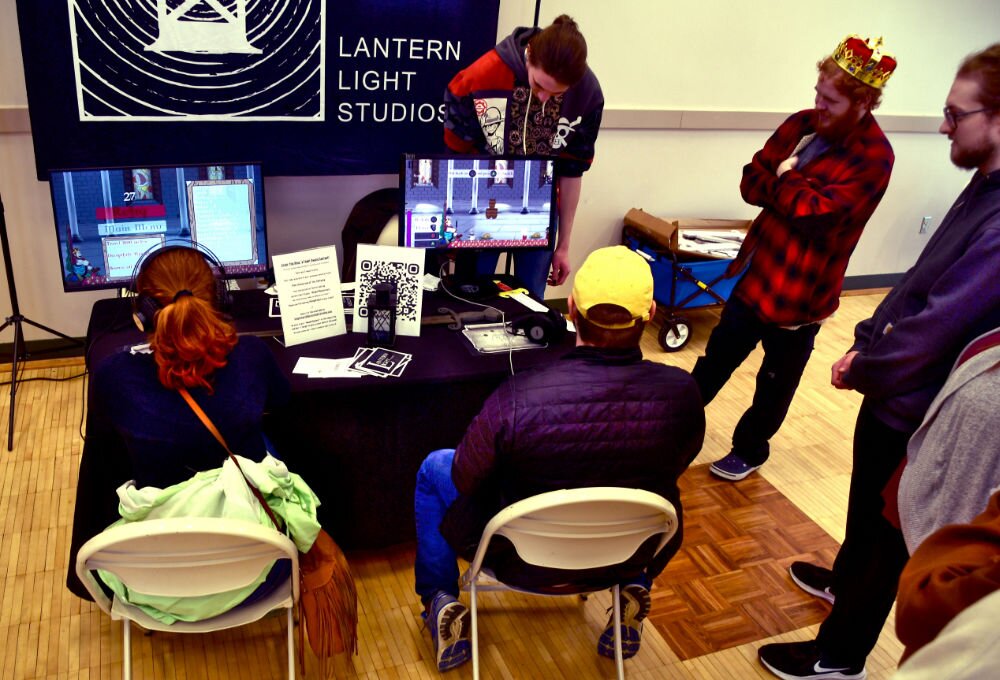
I’m an anime fan, a “normie,” not a weeb or otaku. I wouldn’t go to a huge con unless I were going to write about it, make pictures, and be able to enjoy it from a position of amused detachment.
There are a lot of small local cons, too, and these are a little easier for a normie to digest. They’re more like farmers markets offering items other than produce. (Well, not exactly. Even small cons usually offer presentations, performances, and panel discussions, which are things I’ve not seen at farmers markets and don’t want to see there.)
Among those local cons is one that just returned after two years’ absence, RathaCon. (The name is actually clever. The second Star Trek movie was subtitled “The Wrath of Khan.” Get it?) It made its return last Saturday and I attended and made some pictures, which you can see here.
It wasn’t as big or diverse as RathaCons of previous years, which oughtn’t be a surprise. Many of the vendors have had to undertake some other line of work — you can’t take two years off and stay in business. Some moved online, which is less expensive than traveling to a different convention each weekend, paying for a display booth, and so on, especially during the high gasoline and other prices that come from an economy that’s gotten all bidened. Some, perhaps, even got jobs. It’s a stretch, but possible.
Still, the event was a modest success. It was better than nothing.
Well, except for the anime part. In earlier years there was a lot of cosplay. Most of it had to do with characters from the Marvel-inspired movies — nobody said that cosplayers are imaginative — but there were some proper anime cosplayers, too. In earlier years there were not just comic sales booths but manga sellers, too. This year I saw none of either, nor was there anyone selling the anime figurines so popular with devotees. That was too bad but not surprising, I guess.
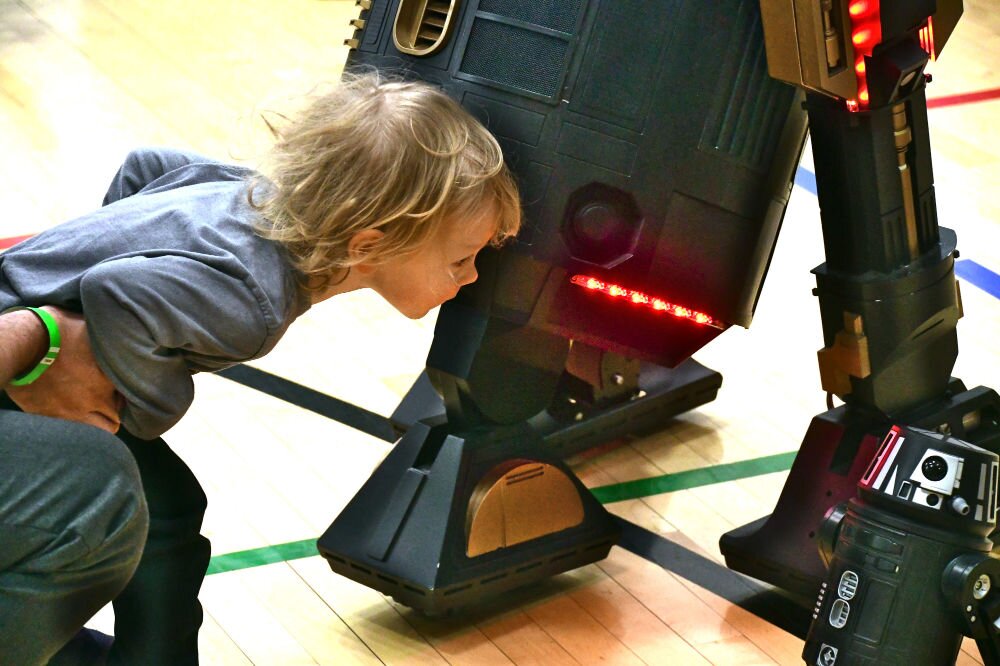
I’d hoped to use RathaCon as a hook to talk about how much I’ve come to appreciate not just anime but the wealth of animusic. Not long ago I rewatched the excellent and moving anime, “Your Lie in April,” which made me cry as much as it did last year, the first time I saw it. But this year I was especially moved by its “OP” — opening sequence and music — with the song Hikaru Nara, “If It Shines,” performed by the extra-sweet Japanese band “Goose House.” If you’ve seen the anime, you’ve got teary eyes by the end of the first few notes. Then again, if you’ve seen the anime, the mere mention of it will probably bring a tear; if not, mention of “Kaori’s letter” will. If you haven’t seen “Your Lie in April” — you should — the lyrics to Hikaru Nara will give you a taste.
Puzzled by the name of the band, I did a little research and as I did I discovered that Goose House is maybe the most lovable band in the world. There are dozens of videos of them performing Hikaru Nara and hundreds of them performing other songs. My favorite is a live performance of Hikaru Nara as the encore song during their 2017 tour, which you can see here. (You can see the whole concert here, and it is wonderful.)
Except for one, Takebuchi Kei who grew up in Los Angeles, the six core members of the band are limited in their English (as I am in Japanese), so what I learned came entirely through watching them, mostly without even the lyrics available to me. And in the course of watching them I think I’ve come to know them a little. (It should be noted that Japanese bands famously shape an image for themselves, so my impressions could be wrong, but if they are, then Goose House are all very good actors.)
They are brilliant musicians. Though the standout instrumentalist is Saito Johnny, everyone in the band is far above average. I was most blown away by the guitar skill of tiny Manami, who has mastered many styles on her cutaway Taylor six-string.
There is a cultural aspect of Japan called kawaii, which means to especially value the cute and adorable. There is another term, moe, which means “imparts a desire to protect.” These notions are rampant in Japanese and J-pop music, with its idols and girls in cat ears and so much more. Nowhere I’ve seen — and I’ve looked, just to get a sense whether my conclusions are goofy — are kawaii and moe more evident than in Goose House, Manami in particular. You can find a great example here, with the six core members of the band having a fine time performing Sakamoto Kyu’s Ashita ga Aruse, “There’s Always Tomorrow.” Though she’s on percussion this time (using chopsticks, I think!), Manami perfectly embodies kawaii, and I encourage you to watch the video just to see the best possible example of the term. That’s her on the right, in tennis shoes and too-big bluejeans. (What are the words that seem to be making them so happy? Here’s a translation If Japanwere to try to take over the world with sheer cuteness, Manami should be their leading general. We wouldn’t have a chance.
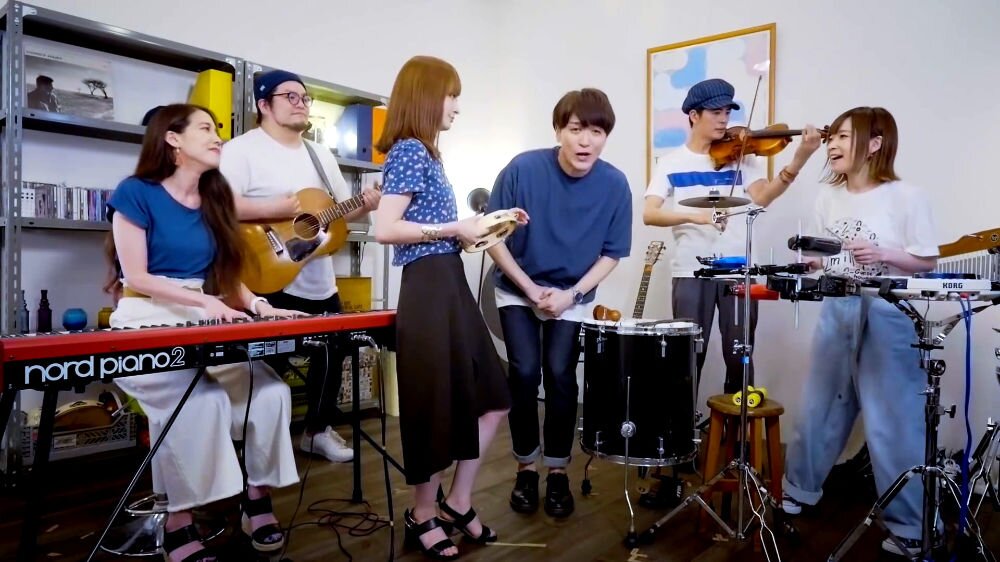
Sadly (for me, I have no idea how it’s working out for them), Goose House somewhat broke up in 2018. Takebuchi Kei started a solo career, and Saito Johnny for obvious reasons is in hot demand. The other four — Manami, Kudo Shuhei, Sayaka, and Watanabe Shuhei — have side and solo projects and still play together, sometimes with Kai and Johnny, as Play.Goose. They’re all very good, though it’s Manami who will steal your heart. Did mine, anyway.
Goose House is one of my three favorite bands, all of which I was surprised to realize I found through anime.
The second of the three, heart-rending though by no means kawaii, is Radwimps. (In Japan, strange use is made of English words and slang, as is true in reverse.) As Goose House figured prominently in my favorite anime, Radwimps adds great emotional depth to my favorite animovie (and favorite movie of any kind) Kimi no Na wa. or “Your Name.” To get a sense of how big a deal they are, and how seriously their music is taken, go here and here to see parts of a remarkable concert: as “Your Name.” played on a giant screen, Radwimps and the Tokyo Philharmonic played the musical soundtrack, live and in real time.
Those two clips display how little matter our understanding of language is in storytelling. (They also display how utterly execrable YouTube’s advertising placement policy is, but YouTube is Google so what should we expect? As it is, the YouTube ads are about as welcome as ringworm, and I suspect draw much the same response.)
Following the unprecedented success of “Your Name.”, the brilliant director Shinkai Makoto chose Radwimps to do the music for his next movie, the also-beautiful “Weathering With You.” We don’t have a symphony concert to show for it, but we do have a captivating music video of the main theme, “Is There Still Anything That Love Can Do?” The video is seven and a half minutes long and seems to have been made in one long, very complicated shot. Radwimps lead singer and songwriter, Noda Yojiro, is really, really good, as are the others in the band.

I mentioned three favorite bands, and the third of my favorite musical groups got especially famous a long time ago through their soundtrack for the quirky but excellent Furi Kuri, “FLCL” known familiarly as “Fooly Cooly.” They’re The Pillows, and if they’d done nothing other than FLCL they’d be remembered as a great band. (They have done much more, including the many-years-later sequels to FLCL that weren’t as good as accompanying The Pillows’ music was. The ED of the original FLCL was the very memorable “Ride on Shooting Star,” as seen here in their music video (not from the anime).
Two years ago I found comfort and escape with my discovery of the many charms of anime. I didn’t really find those things at RathaCon, for understandable reasons. But there was and is happiness to be had in animusic. I encourage you to take a listen, starting with the links above.
I think you’ll love it.

Dennis E. Powell is crackpot-at-large at Open for Business. Powell was a reporter in New York and elsewhere before moving to Ohio, where he has (mostly) recovered. You can reach him at dep@drippingwithirony.com.
You need to be logged in if you wish to comment on this article. Sign in or sign up here.
Start the Conversation